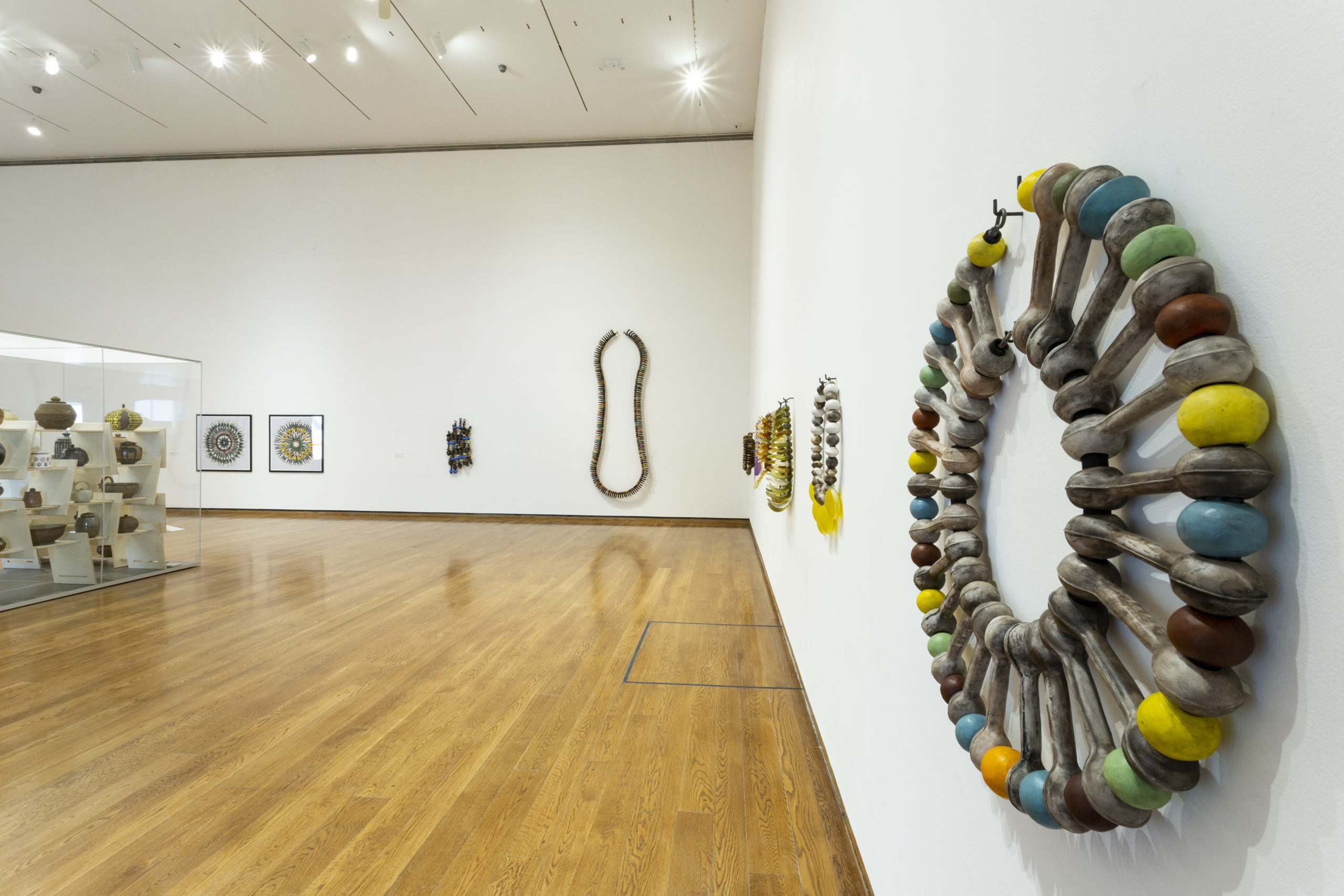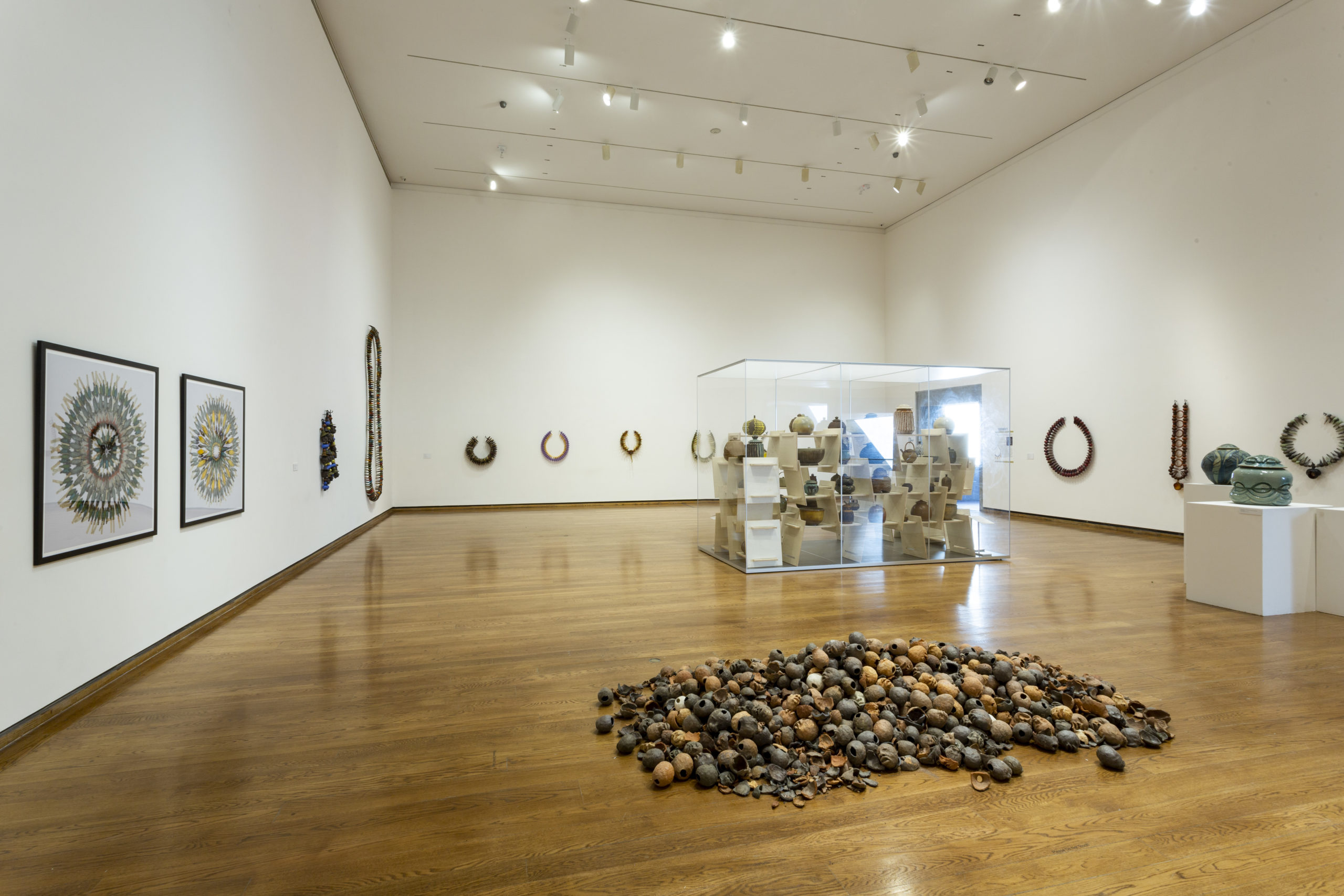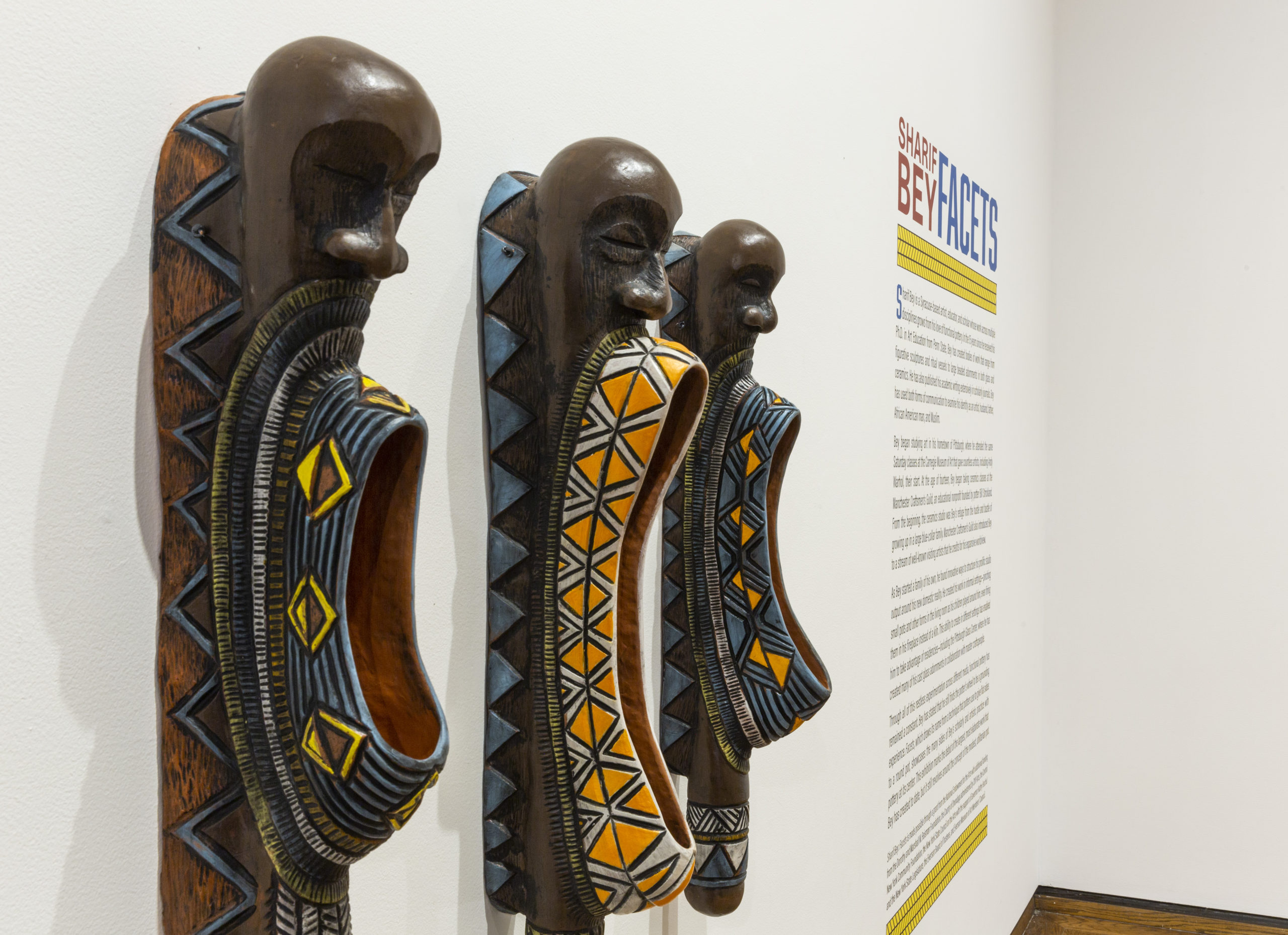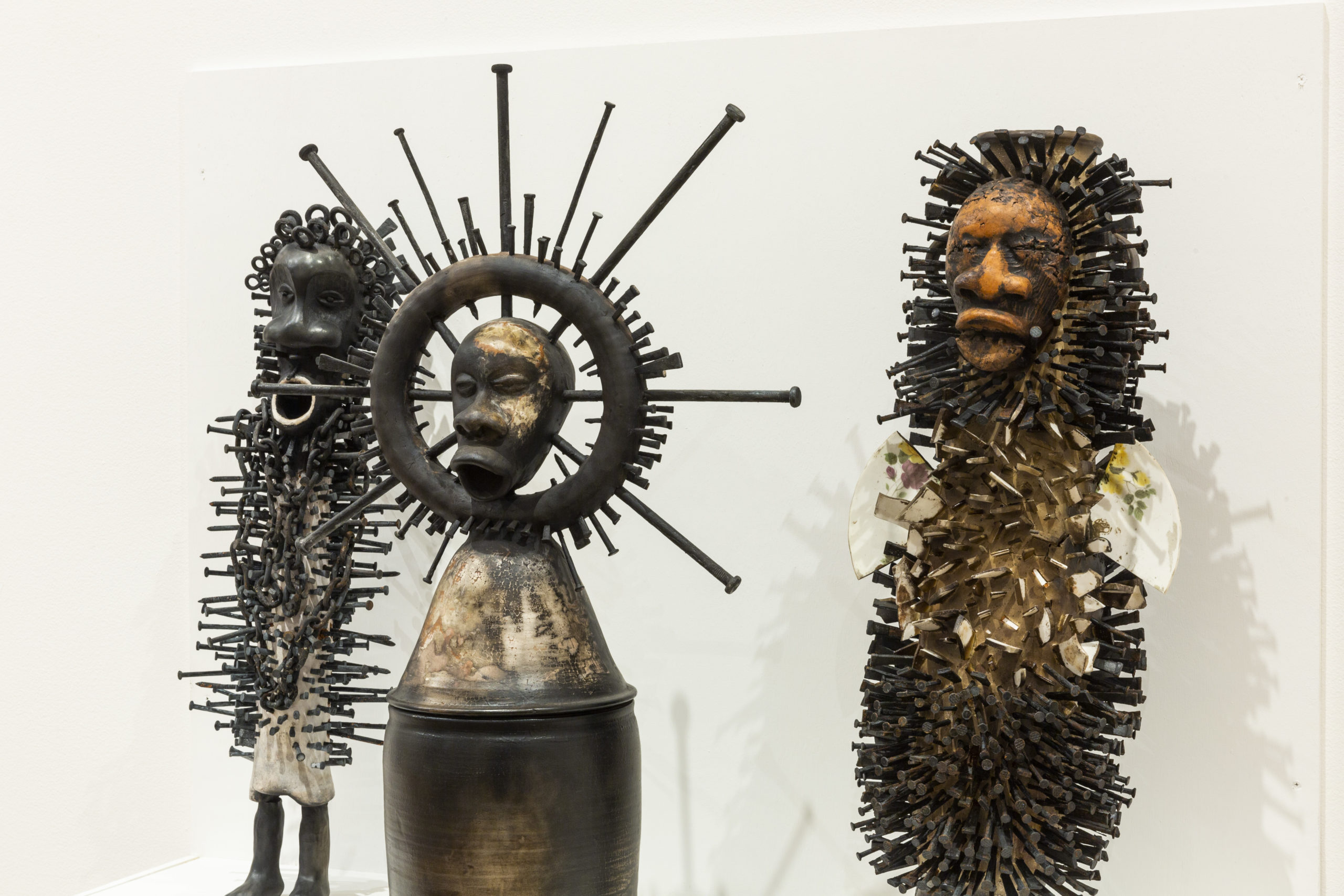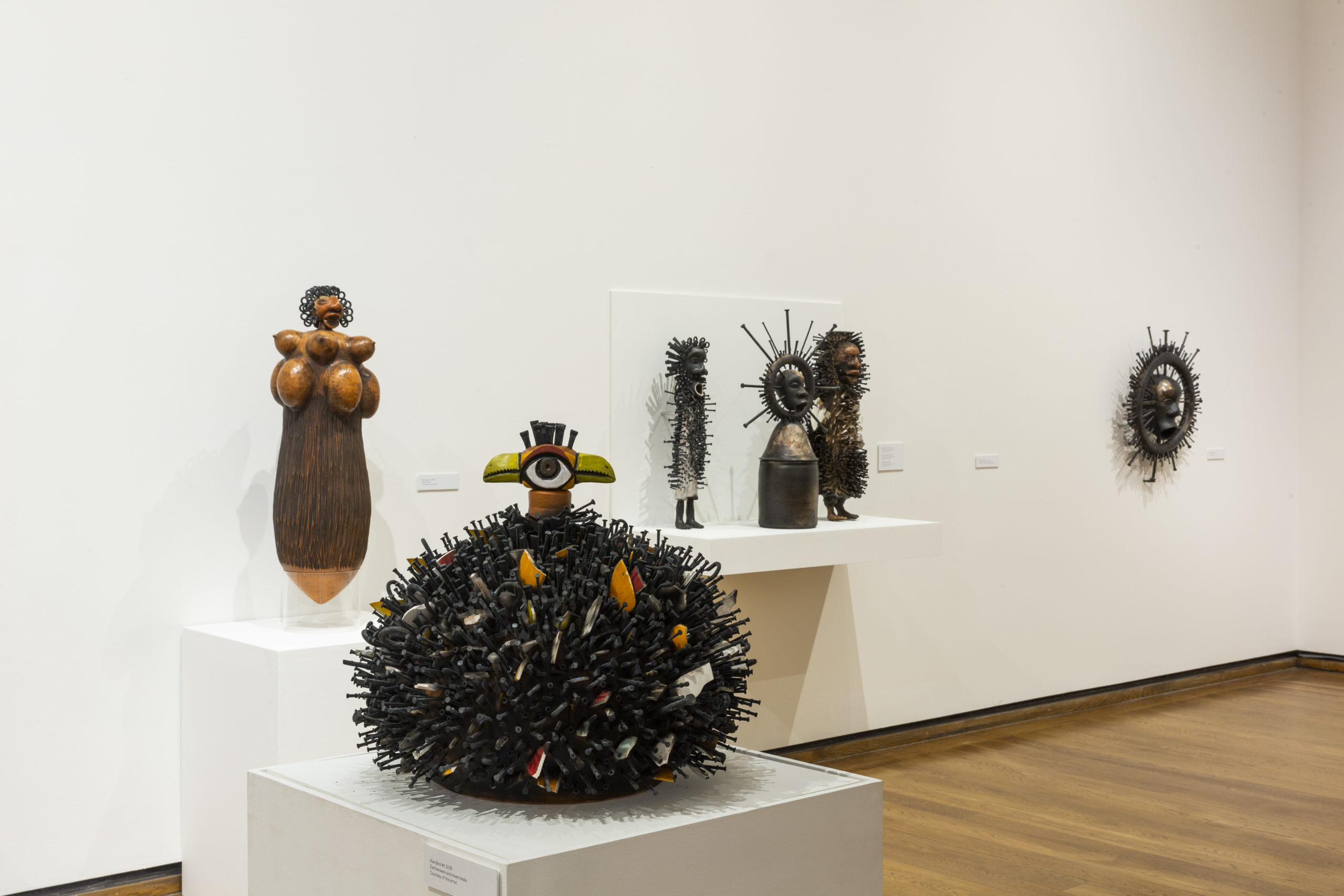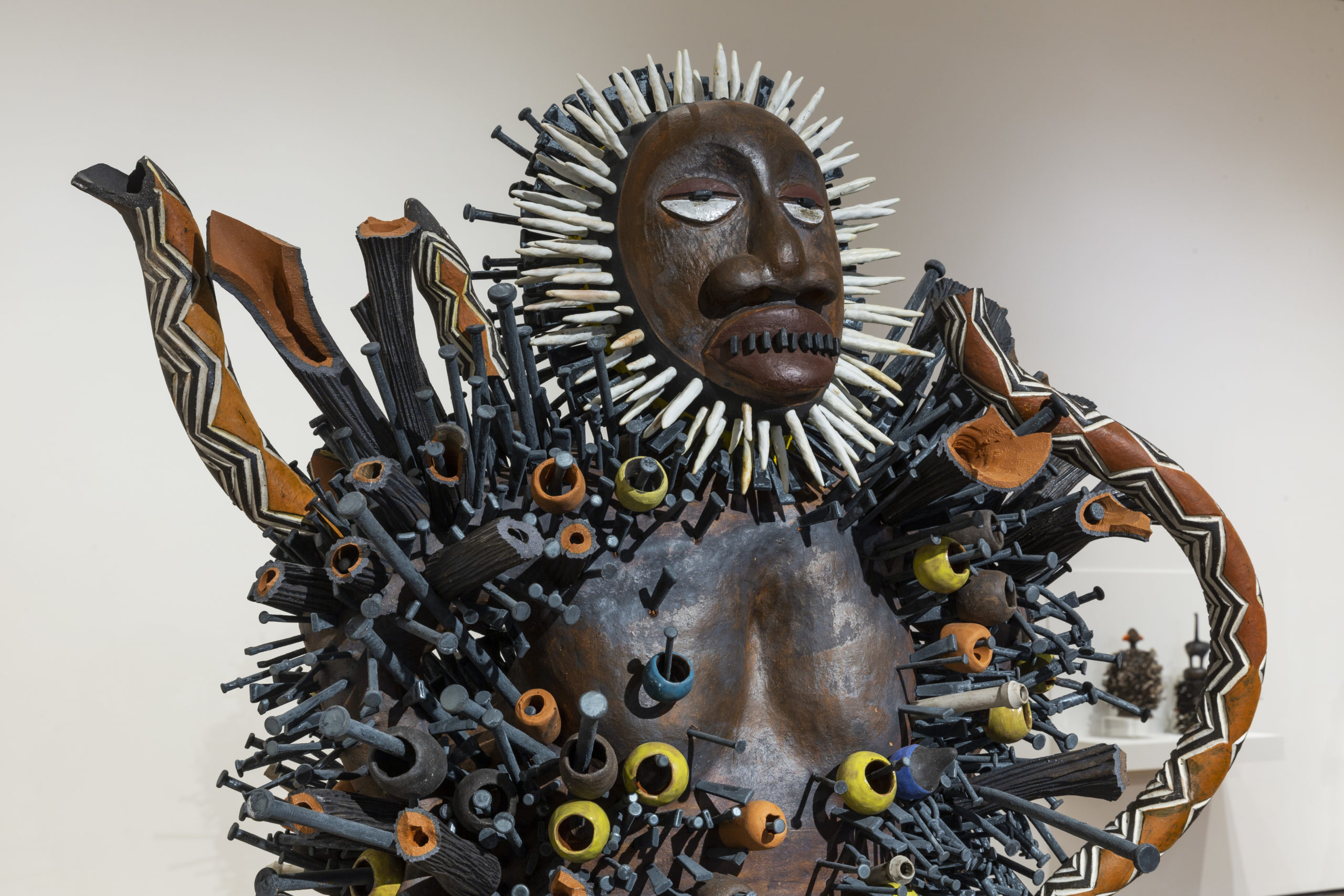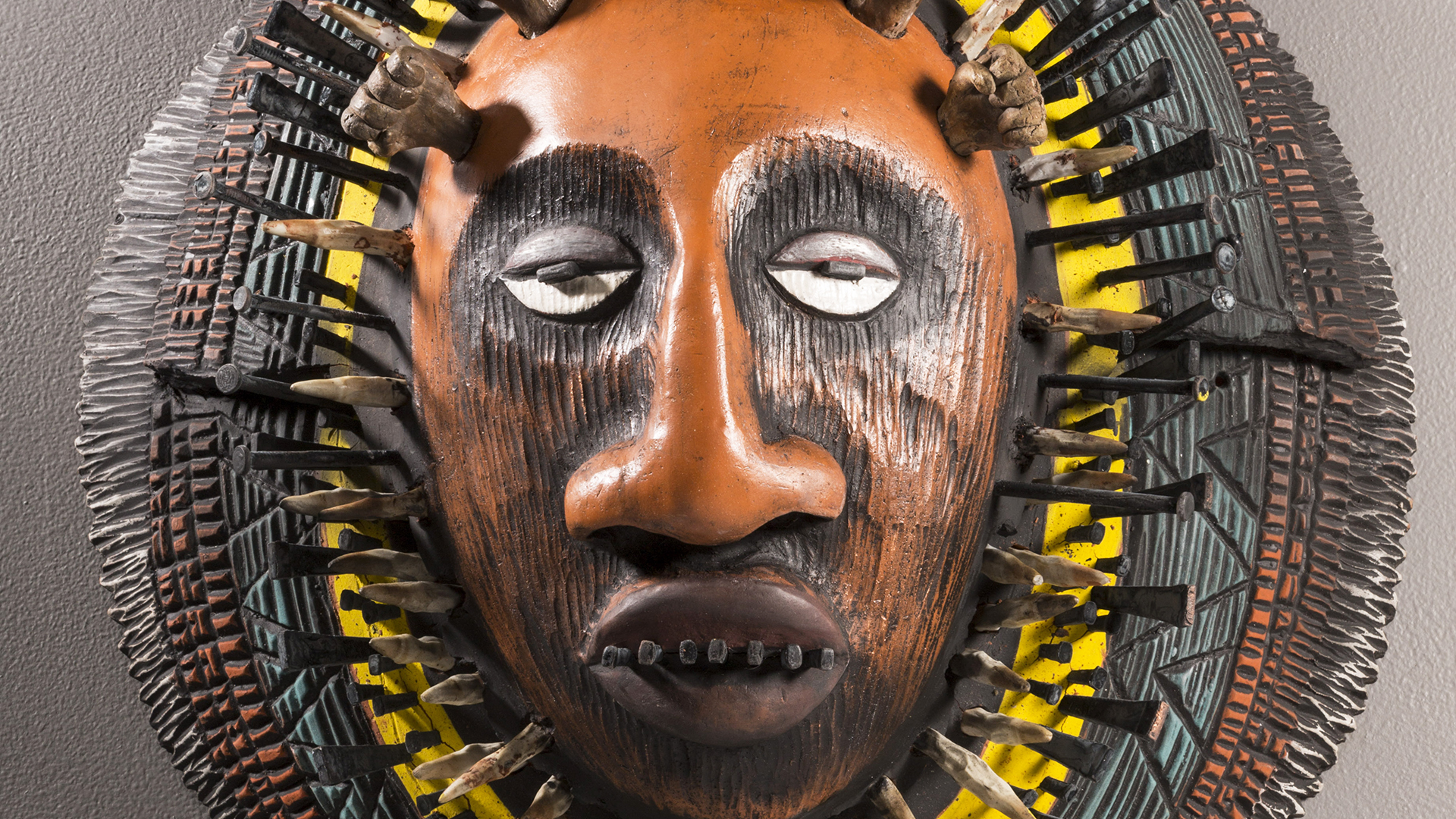Over the past three decades, artist and educator Sharif Bey (b. 1974) has created a body of work in ceramics and glass that explores the visual heritage of Africa and Oceania. Since accepting a teaching position at Syracuse University in 2009, he has become a vital part of Syracuse’s social fabric. Coming on the heels of an exhibition at the Carnegie Museum of Art in Pittsburgh, where he was born and raised, the Everson presents a survey of Bey’s work, starting with the functional pottery that has served as a touchstone throughout his career, and continuing through his most recent body of large-scale figurative sculptures in clay.
This project is supported in part by the National Endowment for the Arts. To find out more about how National Endowment for the Arts grants impact individuals and communities, visit www.arts.gov.
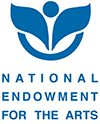
Learn About Sharif Bey
Much of Bey’s work investigates the meaning of African symbols and artifacts and the ways in which colonialism stripped them of their original purpose and power. “I was raised in an anti-imperialist household – that was the culture,” Bey explains, “a culture of asking, of questioning, of pushing back on the narratives that media has fed to us.”
Since accepting a teaching position at Syracuse University in 2009, Bey has become a vital part of Syracuse’s social fabric. Coming on the heels of an exhibition at the Carnegie Museum of Art in Pittsburgh, where he was born and raised, the Everson will present a survey of Bey’s work, starting with the functional pottery that has served as a touchstone throughout his career, and continuing through his most recent body of large-scale figurative sculptures in clay.
“With Manhattan gallery representation from Albertz Benda Gallery in Chelsea and a recent exhibition at the Carnegie Museum, the rest of the world is finding out what we have long known in Syracuse—that Sharif is a generational talent with a rare combination of skill, intellect, and fearlessness,” says Garth Johnson, the Everson’s Curator of Ceramics. “We’re grateful to the National Endowment of the Arts for recognizing Sharif’s work and making it possible for the Everson to showcase it in the context of his own community.”
Borrowing works from across the country, including his first major statement, Assimilation? Destruction? (2000), to an early pot that dates back to his years as a teenage potter, Sharif Bey: Facets is a hometown celebration of Bey’s immense swell of national and international acknowledgment and growing stature within contemporary art.
Bio
Sharif Bey [b. 1974, Pittsburgh, PA] lives and works in Syracuse, NY, where in addition to this studio practice he is an associate professor in arts education and teaching and leadership in the College of Visual and Performing Arts and Syracuse University’s School of Education. Bey earned his B.F.A. in ceramics from Slippery Rock University of Pennsylvania, an M.F.A. in studio art from the University of North Carolina and a Ph.D. in art education from Penn State University. He has participated in many artist-in-residencies and fellowships to hone his craft, and is included in numerous public collections including: The Carnegie Museum of Art, Pittsburgh, PA; Smithsonian American Art Museum and Renwick Gallery, Washington DC; the Columbus Museum of Art, OH; and the United States Embassies of Khartoum, Sudan; Kampala, Uganda; and Jakarta, Indonesia.
Produced by Syracuse University
Produced by the Carnegie Museum of Art
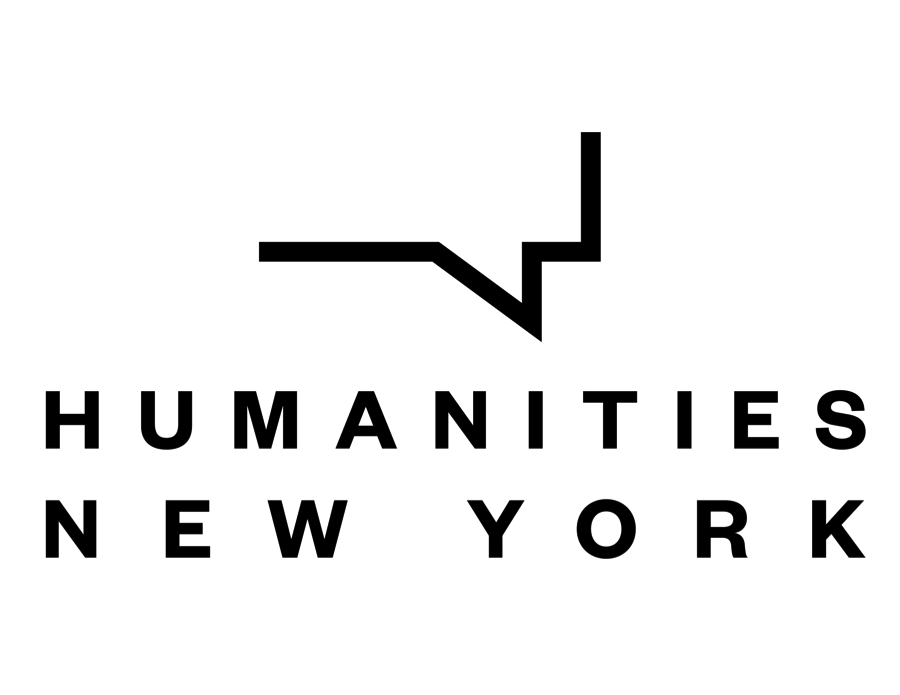
Sponsored by a Humanities New York Action Grant.
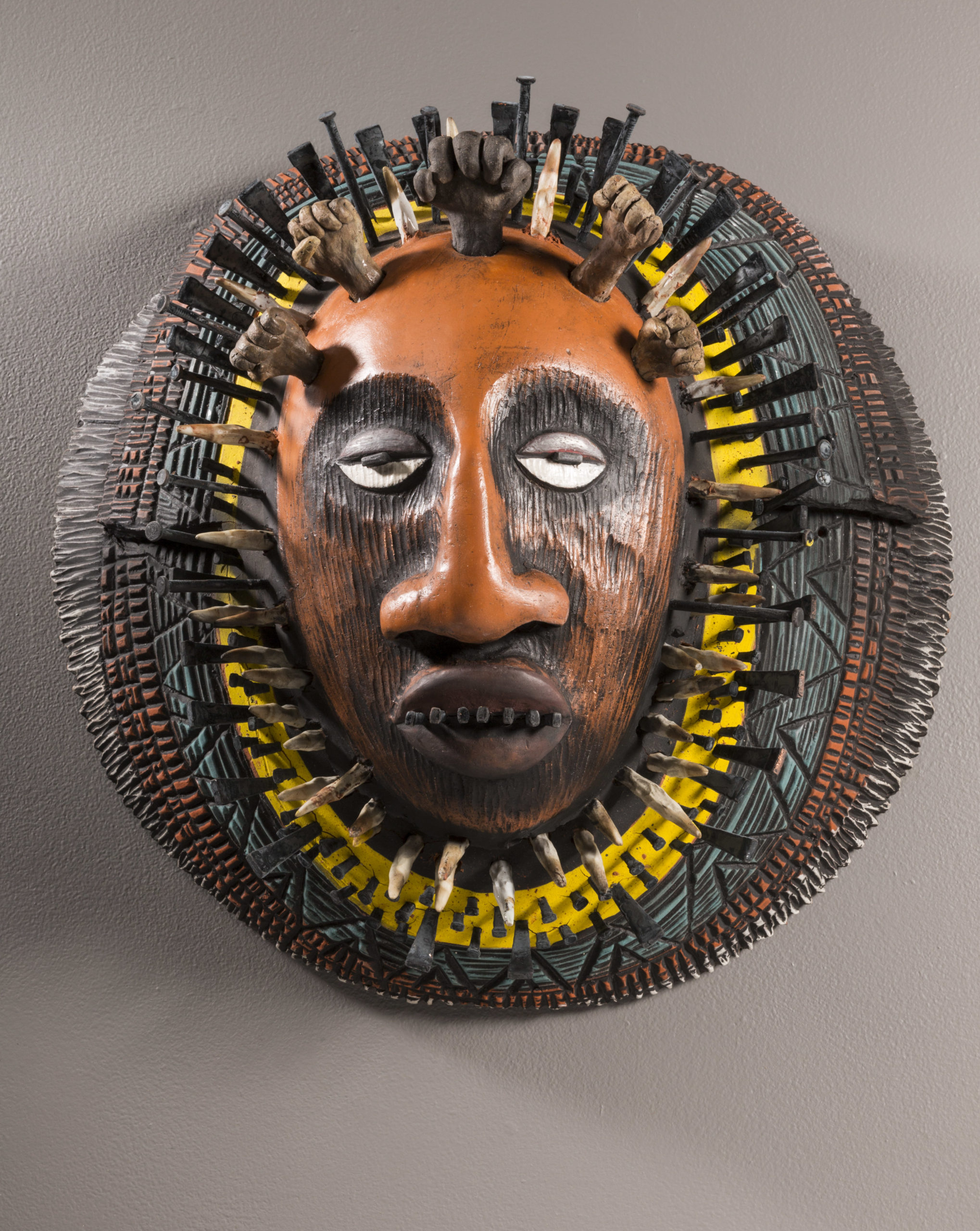
Protest Shield #2, 2020, Earthenware, nails, and mixed media, 20 x 20 x 12 inches, Collection of the Everson Museum of Art
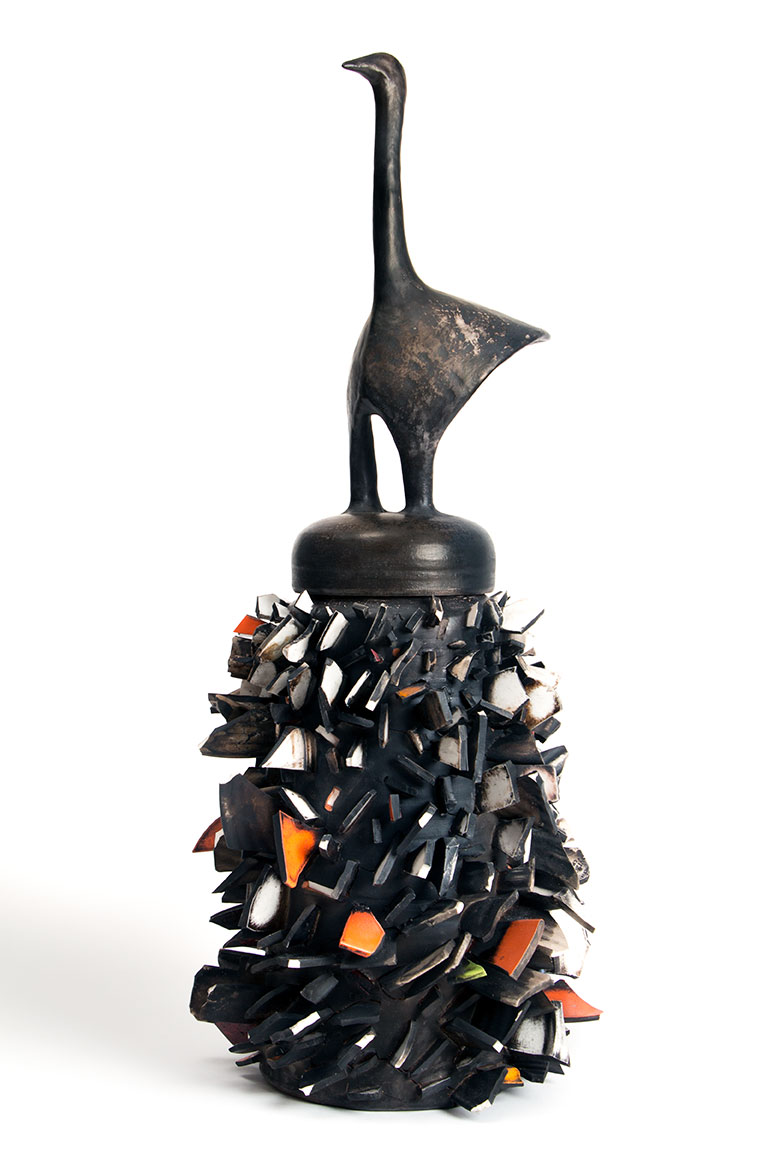
Ceremonial Vessel VI, Earthenware/Mixed Media, 22″x9″x9″, Courtesy of Albertz Benda



